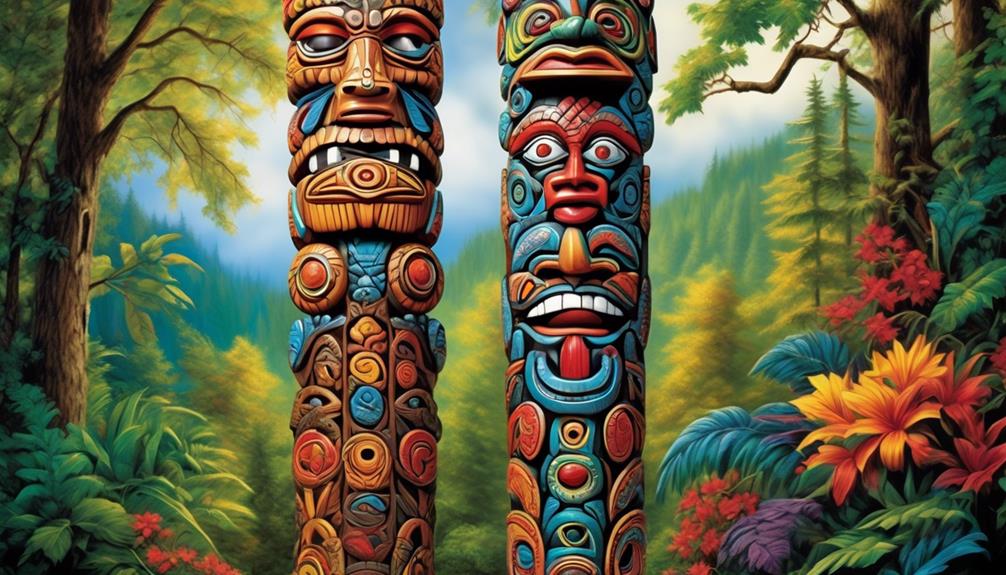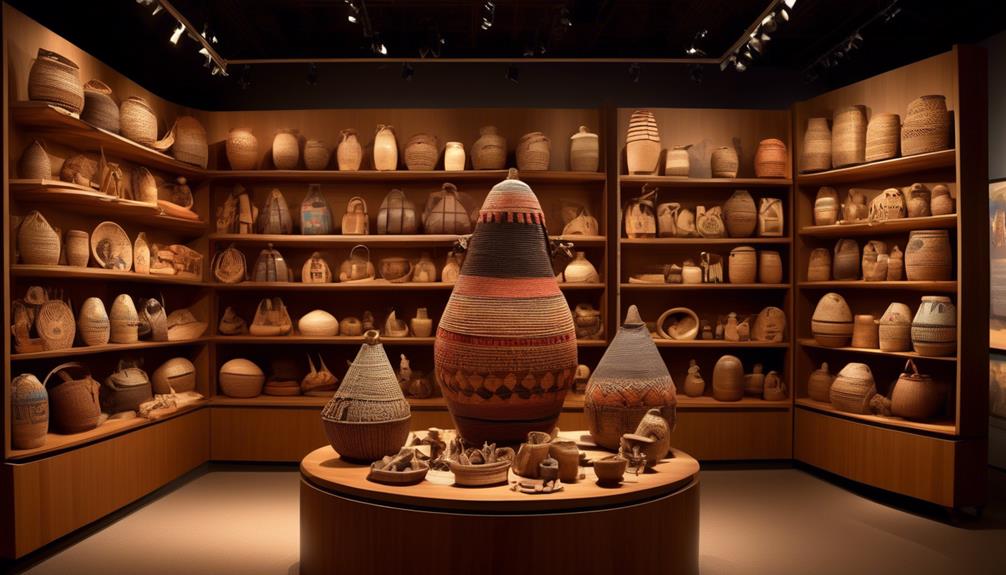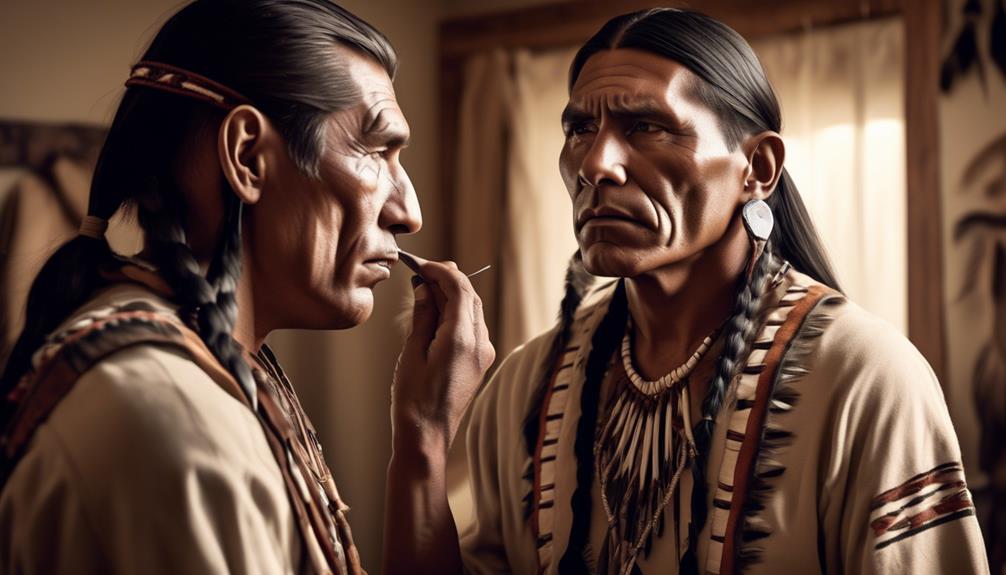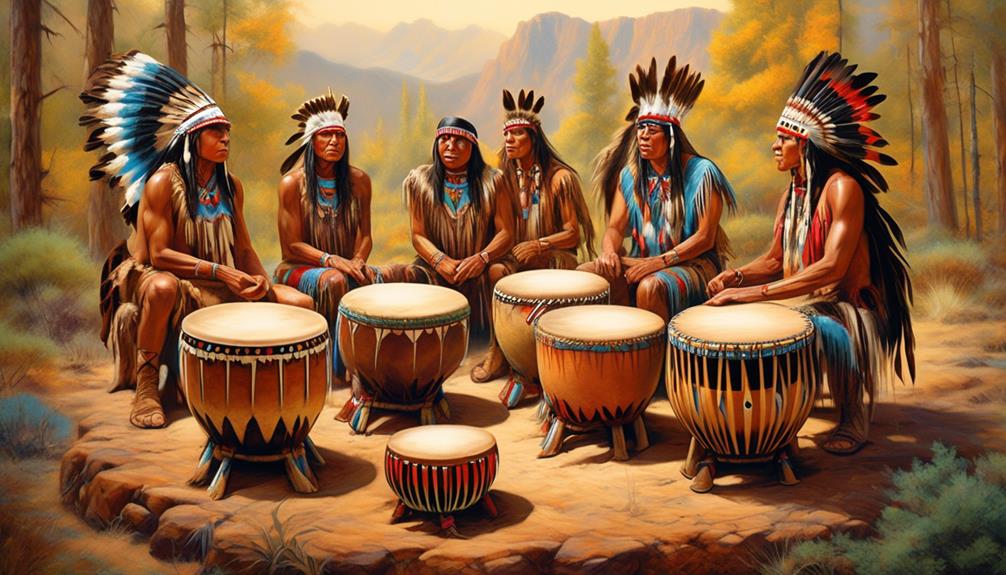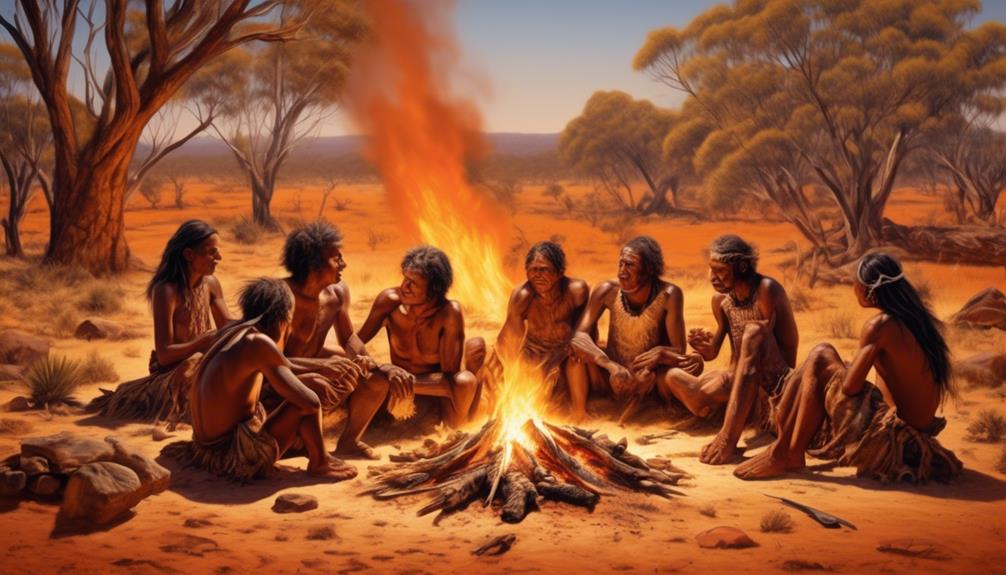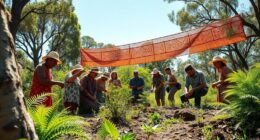Aboriginal totems are not just symbols; they hold deep significance for Indigenous communities, representing identity, connections, and spiritual importance.
But have you ever wondered why? There is a depth of meaning and cultural importance behind the concept of totems in Aboriginal traditions that goes beyond mere representation.
These totems hold a key to understanding the profound relationship between the Aboriginal people, their land, and their ancestors.
Key Takeaways
- Aboriginal totems are ancient traditions and symbols that represent kinship, identity, and connection to the natural world.
- They have deep spiritual significance in Aboriginal culture and serve as the basis for social organization, preserving cultural traditions and knowledge.
- Totems create a sense of identity, belonging, and purpose, and foster an appreciation of Indigenous Australian traditions.
- They also represent a deep connection to the land and ancestors, acting as a living archive of cultural heritage and reinforcing responsibilities to future generations.
Origins of Aboriginal Totems
The origins of Aboriginal totems lie in the ancient traditions and spiritual beliefs of Indigenous Australian communities, serving as symbols of kinship, identity, and connection to the natural world. These cultural traditions are deeply rooted in the belief that every individual is connected to a specific natural element, often represented by an animal or plant, which becomes their totem. The totem isn't merely a symbol but a representation of the ancestral link between the individual, their community, and the natural world.
The totemic system is intricately woven into the social structure and daily life of Indigenous Australian communities. It dictates social responsibilities, marriage rules, and ceremonial practices, thereby playing a pivotal role in the cultural identity and cohesion of these societies. Through animal representation, each totem embodies unique characteristics and behaviors that are revered and emulated within the community.
Furthermore, the totem serves as a spiritual guide, providing a profound connection to the land and its resources. It encapsulates a profound respect for the environment, emphasizing the harmonious coexistence and interconnectedness of all living beings. The totemic system, thus, isn't confined to a mere symbol but encompasses a profound spiritual, social, and cultural significance within Indigenous Australian communities.
Significance in Aboriginal Culture
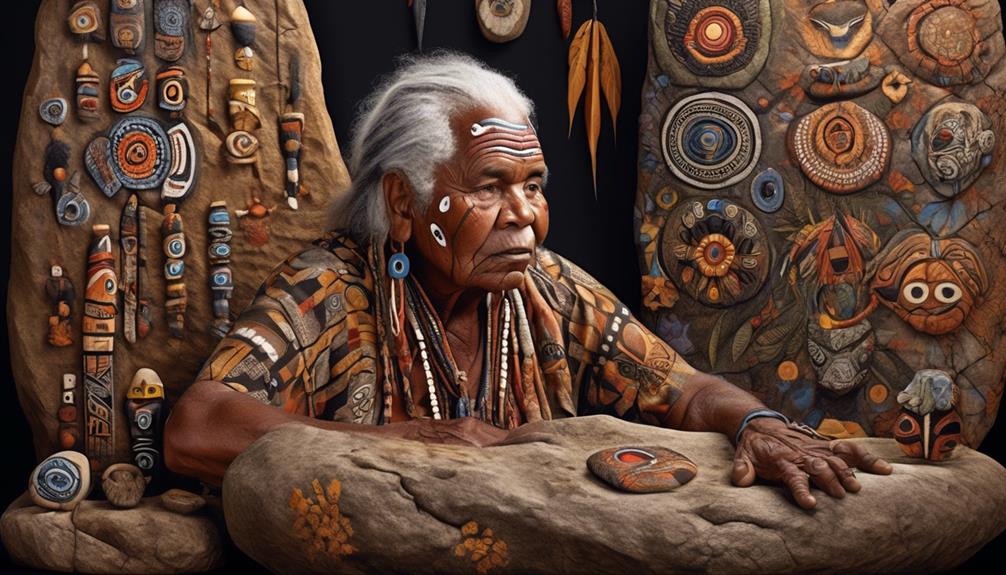
Embedded within the fabric of Aboriginal culture, totems hold a profound significance, shaping and guiding the spiritual, social, and cultural aspects of Indigenous Australian communities. The significance of totems in Aboriginal culture can be understood through the following points:
- Spiritual Connection: Totems are deeply intertwined with the spiritual beliefs of Indigenous Australians. They serve as a link between individuals, their ancestors, and the natural world, fostering a sense of belonging and spiritual connection.
- Social Structure: Totemic relationships form the basis of social organization within Aboriginal communities. They dictate kinship systems, marriage regulations, and societal responsibilities, playing a pivotal role in maintaining social harmony and order.
- Cultural Traditions: Totems are central to the preservation of cultural traditions and knowledge. They're intricately woven into storytelling, art, dance, and rituals, passing down ancestral wisdom from generation to generation.
- Identity and Belonging: Totemic relationships provide individuals with a profound sense of identity, belonging, and purpose within their community, reinforcing a deep connection to their cultural heritage.
Understanding the significance of totems in Aboriginal culture is essential for appreciating the rich tapestry of Indigenous Australian traditions and the enduring importance of totemic relationships in contemporary society.
Connection to Land and Ancestors
Connection to our ancestral land and heritage is a fundamental aspect of Aboriginal culture, intertwining with the significance of totems in shaping our spiritual, social, and cultural identity. The land connection is deeply rooted in our ancestral lineage, weaving a complex tapestry of belonging and responsibility. Our deep spiritual connection to the land isn't merely a physical or material relationship; it encompasses a profound spiritual and emotional bond that forms the foundation of our existence. The land isn't just a place where we live; it's an integral part of our identity, history, and worldview. Our ancestors' stories, wisdom, and knowledge are intricately linked to the land, and it serves as a living archive of our cultural heritage.
Furthermore, our connection to the land transcends time and space, encompassing a profound sense of belonging and interconnectedness with our ancestors. It's through this connection that we derive a sense of purpose, resilience, and cultural continuity. Our ancestral lineage is intricately tied to the land, and it shapes our understanding of the world, our place within it, and our responsibilities to future generations.
This deep-rooted connection to our land and ancestors is a source of strength, wisdom, and cultural pride, fostering a profound sense of belonging and interconnectedness within the Aboriginal community.
Spiritual and Symbolic Meaning
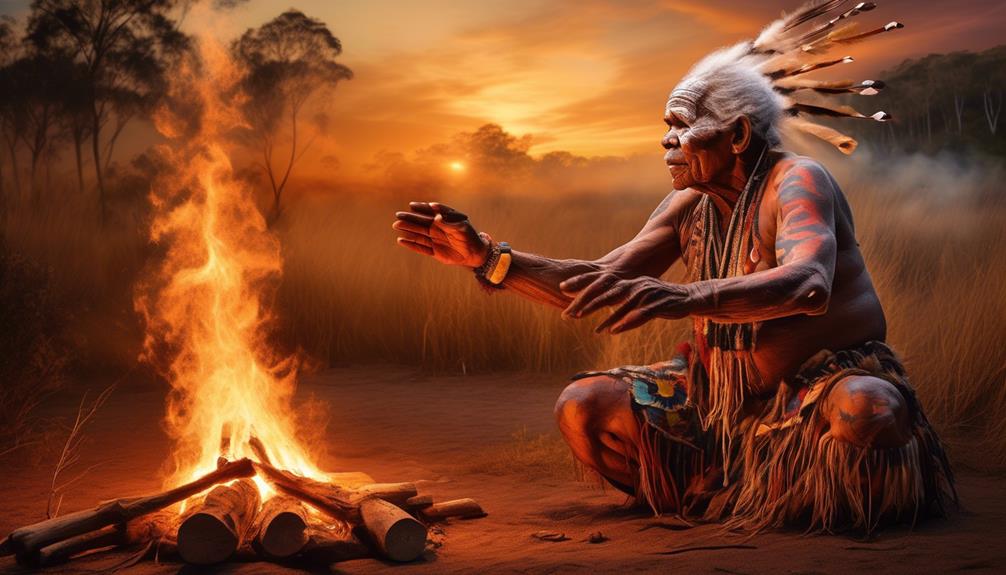
Embracing our ancestral totems, we find ourselves immersed in a rich tapestry of spiritual and symbolic significance that permeates our cultural identity. Our totems serve as a bridge between the physical and spiritual realms, facilitating a deep spiritual connection to our ancestors, the land, and the natural world. They aren't mere symbols but embody the essence of our cultural heritage, carrying profound spiritual meaning that transcends generations.
- Spiritual Connection: Our totems are imbued with spiritual energy, linking us to the wisdom and guidance of our ancestors. They provide a conduit for communicating with the spiritual realm and accessing ancient knowledge and traditions.
- Cultural Preservation: Through our totems, we preserve and honor the cultural and spiritual practices of our people. They serve as repositories of our collective wisdom, values, and beliefs, ensuring that our cultural heritage endures through the ages.
- Symbolic Representation: Each totem carries symbolic significance, representing aspects of nature, animals, or celestial elements. These symbols convey profound meanings, often rooted in creation stories and ancestral teachings.
- Interconnectedness: Our totems reflect the interconnectedness of all living beings and the natural world, reinforcing the importance of harmony, balance, and respect for the environment. They remind us of our responsibility to preserve and protect the earth for future generations.
Contemporary Importance and Preservation
Preserving our ancestral totems in contemporary society is crucial for fostering a deep understanding of our cultural heritage and maintaining a profound connection to our spiritual roots. The contemporary relevance of totems lies in their ability to serve as powerful symbols that bridge the gap between the past and the present. By preserving these totems, we ensure that the rich tapestry of our cultural history isn't lost to time.
In today's fast-paced and ever-changing world, it's essential to hold onto the traditions and beliefs that have shaped us as a people.
Cultural preservation is vital for fostering a sense of identity and belonging within our community. Our totems aren't just artifacts of the past; they're living embodiments of our values, stories, and relationships with the natural world. They provide a framework for understanding our place in the universe and offer guidance for navigating the complexities of modern life.
Frequently Asked Questions
How Do Aboriginal People Choose Their Totem Animals or Plants?
When choosing their totem animals or plants, Aboriginal people consider a variety of factors. Totem selection is a deeply cultural process, with each totem holding symbolic representation and a strong connection to nature.
The choice often reflects family lineage, personal experiences, and spiritual connections. The totem's significance is deeply ingrained in our cultural beliefs and traditions, serving as a powerful reminder of our interconnectedness with the natural world.
Are There Any Specific Rituals or Ceremonies Associated With Discovering or Honoring One's Totem?
Discovering rituals and totem honoring ceremonies are integral to the Aboriginal culture. Through sacred ceremonies and rituals, we connect with our totems, seeking guidance and understanding.
The process involves deep introspection, often guided by elders and spiritual leaders. These rituals are a profound expression of our relationship with nature and the spiritual world. They're a powerful reminder of the interconnectedness of all living beings and the importance of honoring our totems.
Can an Individual's Totem Change Over the Course of Their Life, and if So, How Does This Process Occur?
Totem symbolism is deeply rooted in our cultural significance, and our personal connection with our totem is profound.
The evolution of totem is a dynamic process, and it can change over the course of our lives. This change occurs through personal growth, experiences, and spiritual development. As we evolve, our totem may also evolve, reflecting our inner transformations.
The process of totem change is a beautiful expression of our journey and connection to our ancestral traditions.
Are There Any Taboos or Restrictions Related to Interacting With One's Totem in Aboriginal Culture?
In Aboriginal culture, interacting with one's totem is surrounded by cultural significance and a deep spiritual connection.
Various taboos and restrictions exist, guiding how individuals engage with their totems. These may include rules around hunting, gathering, or specific ceremonies.
Adhering to these guidelines is crucial for maintaining harmony and balance within the community.
This connection to totems reflects the intricate and sacred relationship between individuals and the natural world.
How Do Modern Aboriginal Communities Work to Preserve and Pass on Knowledge About Totems to Future Generations?
In modern Aboriginal communities, preserving traditions and cultural education are paramount. Elders pass on knowledge about totems to future generations through oral storytelling, ceremonies, and cultural practices.
It's a deeply rooted process, ensuring that the significance and understanding of totems continue to thrive. This approach maintains the connection to ancestral wisdom and fosters a sense of identity and belonging.
It's a testament to the enduring strength of Aboriginal culture and the commitment to passing on traditions.
Conclusion
In conclusion, Aboriginal totems hold a deep significance in their culture, serving as a connection to their land, ancestors, and spiritual beliefs.
Their preservation and contemporary importance highlight the enduring strength and resilience of Aboriginal traditions.
Just as the totems stand as symbols of identity and belonging, they also serve as a reminder of the enduring legacy and rich cultural heritage of the Aboriginal people.
